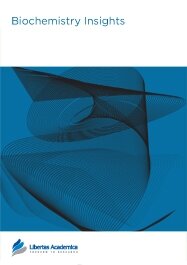

Publication Date: 01 Sep 2008
Journal: Biochemistry Insights
Citation: Biochemistry Insights 2008:1 23-33

Environment Canada, Fluvial Ecosystem Research, 105 McGill, Montréal, Quebec, Canada H2Y 2E7.
Abstract
The purpose of this study was to examine the function of metallothioneins (MT) in respect to the mobilization of heavy metals and superoxide anion (O2-) scavenging in aquatic organisms. Using an O2- generating system, liberation of free zinc from native and zinc MT (Zn-MT) was measured in vitro. Addition of the O2- generating system and H2O2 readily increased the di- and trimeric forms of MT as determined by gel electrophoresis analysis. To determine whether the proportion of oxidized MT could change in contaminated environments, metal-contaminated Mya arenaria clams were collected from a harbour in the St. Lawrence Estuary. The levels of labile zinc, superoxide dismutase (O2- scavenging enzyme), lipid peroxidation (LPO) and the oxidized/metallic form of MT were determined in the digestive gland. The results revealed that the induction of total MT levels was the result of increased oxidized MT at the expense of the reduced or metallic form of MT. Both superoxide dismutase (SOD) and labile zinc (Zn) levels were induced and they were significantly correlated with the oxidized form of MT, but not the metallic form, in feral clam populations. We concluded that the level of total MT was related to Zn mobility and the activation of antioxidant mechanisms such as SOD, and corresponded to the levels of oxidized MT. The metallic form of MT was negatively associated with Zn mobility but positively associated with oxidative damage such as LPO. Overall, the oxidized fraction of MT appeared to be more closely related to detoxification, while the metallic form of MT was associated with metal mobility and toxicity via oxidative damage. The protective effect of MT during heavy-metal contamination depends on the availability of metals and on its capacity to sequester reactive oxygen species.
PDF (589.81 KB PDF FORMAT)
RIS citation (ENDNOTE, REFERENCE MANAGER, PROCITE, REFWORKS)
BibTex citation (BIBDESK, LATEX)


The submission process for manuscript publication in Breast Cancer: Basic and Clinical Research is as easy as A,B,C! Any minor hiccups I encountered were quickly addressed by Libertas' expert staff via prompt emails, and the timelines between initial submission and publication are surely the shortest on record! I will definitely be submitting future manuscripts to this journal, and look forward to working with their professional and expert team.
Facebook Google+ Twitter
Pinterest Tumblr YouTube